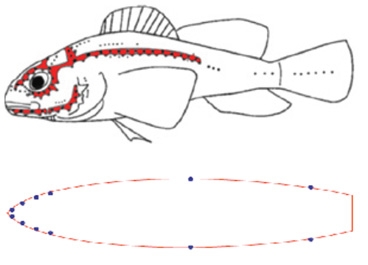Researchers at MIT have devised methods of utilising ocean currents to the advantage of ocean vessels in improving their manoeuvrability and energy saving. Pressure around the AUVs exerted by the ocean water affects their performance by impeding their speed or changing their direction. Not only the ocean vessels but their rudders and propellers are also affected by ocean currents.
 Study of mexican Fish Movement
Study of mexican Fish Movement
Researchers shifted their focus in studying the movement patterns of natural creatures like fish, which are not affected by these currents while moving underwater. A professor of mechanical and ocean engineering at MIT, Michael Triantafyllou, explained that his team concentrated on recreating the mechanism used by the Mexican fish with their lateral lines for moving in the water. He explained that the lateral lines in the fish were made up of fluid-filled canals, which monitor the flows and send signals to the fish’s brain. Triantafyllou took the help of Microsystems Technology Labs (MTL) at MIT for fabricating micro-sensors which were based on MEMS technology to perform the function of the fluid-filled cells in the fish. The MTL team designed arrays of pressure sensors, which were each two mm in width and covered with a silicon membrane of 20-micron thickness to sense pressure of the ocean. Using electronic amplification, the team displayed the pressure online. Triantafyllou and his team then placed these sensors on small vessels at locations similar to where they were on the fish. The testing was done on a MIT Towing Tank measuring 108-ft in length with a wave generator. They were able to measure the pressure from ocean currents and modify the direction of the vessel, thereby, saving energy. The change in direction was accomplished by altering the angle of movement.
The research team is also working on detection of eddy currents, which affect the navigation of vessels by studying the movement of trout, using the MIT Towing Tank for testing. Some of the other natural creatures, which the team is looking at for efficient design of their ocean vessels are seals. They are concentrating on the whiskers of the seal, which have ability of sensing the flow velocity.